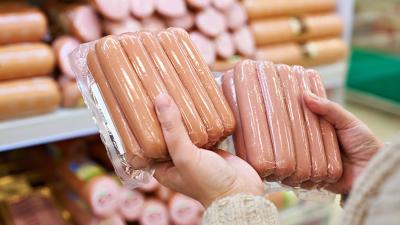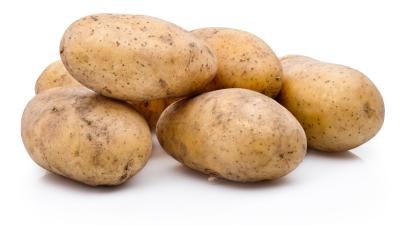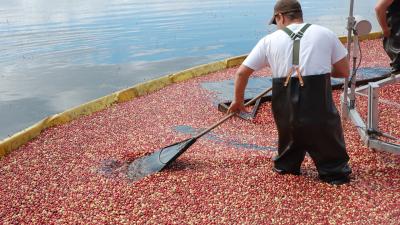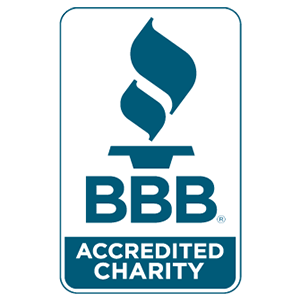Parents' Guide to Building Better Bones
Most parents recognize the need to encourage healthy eating habits in their children, and they have heard that calcium is important for building healthy bones. But did you know that eating plenty of fruits and vegetables is every bit as important? Did you know that scientists are doubtful that drinking more milk has any significant benefit for growing bones?
In this fact sheet, dietitians and doctors with the Physicians Committee for Responsible Medicine aim to set the record straight and help parents sort through the hype about calcium, milk, and bone health.
For Starters
Most children have no problem developing normal, healthy bones. In fact, children in Japan, China, and other countries consume much lower levels of calcium than their North American peers and still develop strong, healthy bones. That's because the human body is an efficient regulator of bone growth.
Just like our hair, skin, and lungs, bone is a living tissue that is constantly being built, broken down, and made anew. Throughout life, bones are taking up and releasing calcium and other minerals, a cycle that is influenced by a variety of factors, including diet, exercise habits, hormones, genetics, and certain diseases. According to a review of bone health in childhood, the largest influence on this cycle is genetics, accounting for 60% to 80% of the differences, with hormones related to growth and puberty second in importance.1
Children generally build bone at a slightly higher pace than they break it down. After adolescence, this cycle begins to shift a little so that bone building and breakdown generally keep pace with each other. Later in life, this bone-remodeling cycle tends to head in the reverse direction—with more bone being broken down than is rebuilt. Of course, the extent of this weakening can range from barely noticeable to a serious condition called osteoporosis, depending on many lifestyle and dietary habits.
The minerals in a person’s skeleton are completely replaced (or recycled) every 10 years.2 Focusing on those actions that promote bone building and those that decrease bone breakdown will effectively improve bone health.
Promoting Bone Building
Bones are a matrix of collagen (the same material used for building joints and other body tissues), water, calcium, phosphorus, magnesium, and other minerals. Special cells are responsible for making new bone. Here are the most important steps your child can take to help keep these bone-building cells busy:
- Eat a diet rich in fruits and vegetables.
- Get vitamin D from the sun or from supplements.
- Get calcium from plant foods and fortified products.
Fruits and Vegetables
Will a glass of orange juice, a crunchy salad, or a bowl of vegetarian chili help grow strong bones? Absolutely. Increasingly, research is pointing to diets rich in fruits and vegetables for promoting bone health. A study published in the American Journal of Clinical Nutrition shows that higher intakes of fruits and vegetables in teenage girls improves bone mineral density.3 An array of nutrients—vitamin C, vitamin K, potassium, and magnesium—found abundantly in fruits, vegetables, and other plant foods, has been shown to promote bone health.4
Vitamin C from citrus fruits, tomatoes, peppers, and other fruits and vegetables is essential for making collagen, the connective tissue that minerals cling to when bone is formed.
Vitamin K is thought to stimulate bone formation. It is found most abundantly in dark leafy greens like kale and spinach, but is also readily available in beans, soy products, and some fruits and vegetables.
Potassium decreases the loss of calcium from the body and increases the rate of bone building. Oranges, bananas, potatoes, and many other fruits, vegetables, and beans are all rich sources of potassium.
Magnesium, like calcium, is an important bone mineral. Studies have shown higher magnesium intakes to be associated with stronger bones. “Beans and greens”—legumes and green leafy vegetables—are excellent sources of magnesium.
Vitamin D
Vitamin D is a hormone produced by sunlight on the skin. It controls your body's use of calcium and is an important player in bone building.5 A lack of adequate vitamin D results in rickets, a serious childhood bone problem. Avoiding rickets is as easy as getting a short daylight walk on most days or having a bowl of cereal with fortified soy or rice milk for breakfast. About 15 minutes of sunlight each day normally produces all the vitamin D your child needs. If your family gets little or no sun exposure, you can include any common multivitamin or a serving of a vitamin D-fortified food in your daily routine. Consuming too much causes problems, so be sure not to overdo it.
Calcium from Plant Sources
Children and adults lose calcium from the body every day, so we need to replenish it. Healthful calcium sources are “beans and greens.” Broccoli, Brussels sprouts, collards, kale, mustard greens, turnip greens, and others are loaded with highly absorbable calcium and a host of other important nutrients. While these foods have a smaller amount of calcium per serving compared with dairy products, they have more calcium per calorie, and the calcium they contain is absorbed nearly twice as well as the calcium in cow's milk.6
One cup of cooked kale, for example, has the same amount of absorbable calcium (100 milligrams) as 1 cup of cow's milk with less than half the calories. Beans are a good source of calcium, too. Choose from baked beans, chickpeas, tofu, or other bean products, and you will find a taste to please every palate. Just a few ounces of tofu, a bowl of vegetable chili, or minestrone soup will provide your child with another healthful helping of absorbable calcium.
If you are looking for a concentrated calcium source, calcium-fortified orange and apple juices, as well as enriched soy and rice milks, contain 300 milligrams or more of calcium per cup in a highly absorbable form. Your child needs only two-thirds of a cup of fortified orange juice, 1 cup of fortified soy milk, or one-third cup of Total Plus cereal to get the same amount of absorbable calcium as a small carton of cow's milk. Children readily enjoy tasty and healthy treats made with these calcium-rich foods, such as Pumpkin Spice Muffins or cereal topped with berries and rice milk.
Avoiding Excess Bone Loss
A normal part of the bone-recycling process is the breakdown and release of calcium and other minerals into the bloodstream. These minerals are filtered through the kidneys and lost through the urine. Minimizing this loss is a smart strategy for protecting bones. Here are important steps you and your child can take to avoid excess bone loss:
- Limit salty foods.
- Keep children away from smoking.
- Get moving! Play and exercise every day.
- Limit added phosphorous.
Salt
Researchers have known for a long time that higher salt (sodium) intake leaches calcium from the bones.7 The kidneys have the job of filtering excess salt into the urine. When they let the sodium pass out of the body, calcium flows out with it. This means the more salt your children consume, the more calcium they lose, and the more they need in their diets to replace the calcium that is leaving. Lowering salt intake will reduce bone breakdown and calcium loss. To do this, you may want to avoid the top sources of sodium in the diet, including processed foods such as cured meats, cold cuts, chicken, frozen or premade meals, pizza, and cheese.
Smoking
You already know that smoking increases susceptibility to colds and other respiratory illnesses and increases the risk of heart attacks and cancer. But did you know that smoking can lead to reduced bone mass and decreases calcium absorption from food? A study of identical twins showed that if one twin was a longtime smoker and the other was not, the smoker had a 40% higher risk of a fracture.9
Exercise
Exercise gives bones a reason to live. When bones are put to work, especially in weight-bearing activities such as running, soccer, basketball, and weightlifting, they respond by becoming stronger and denser. Engaging in physical activity may be the most influential thing your child can do to promote adolescent bone health. A recent study published in the medical journal BMC Pediatrics found that sedentary teens had lower bone density than those who engaged in regular physical activity.10
These benefits translate to adulthood, too. Those who are more active growing up tend to have stronger bones as adults, reducing risk of osteoporosis later in life.11 Encouraging your children to get away from the computer or up off the couch to enjoy more active pursuits is great way to help them build healthy bones.
Limit Added Phosphorous
Parents and children should be cautious when it comes to soft drinks, processed foods, and animal products since these all contain phosphorous in levels higher than what the body needs, which can lead to bone loss. Soft drinks contain added phosphorous because it gives them the appealing brown color, and meat contains phosphorous to give it a more appealing color, as well as to maintain the appearance of freshness.13,14 Research shows that drinking soda daily can significantly increase a person’s risk of bone fractures.15
Calcium Sources for Building Bones
Calcium and other minerals are the raw materials necessary for building bones. Like bricks to a bricklayer, calcium is necessary, but it is not the only element needed for bone building. Bricklayers need bricks, mortar, a water source, the right weather, and some manual assistance to get the job done. In a way, the same holds true in the construction of bone.
Recommended Calcium-Rich Foods | ||||
Food | Serving Size | Calcium per Serving | Calcium Absorbed per Serving* | Amount Needed to Absorb Approx. 100 mg Calcium |
Total Plus cereal | 3/4 cup | 1,000 | 301 | 1/3 cup |
Orange juice, calcium-fortified | 1 cup | 300 | 108 | 7/8 cup |
Soy milk, calcium-fortified | 1 cup | 300 | 93 | 1 cup |
Basic Four cereal | 1 cup | 306 | 92 | 1 cup heaping |
Sesame seeds, unhulled | 1 oz. | 280 | 58 | 1 3/4 oz. |
Firm tofu, calcium-set | 3 oz. | 172 | 53 | 2/3 cup |
Kale, frozen | 1/2 cup | 90 | 53 | 1 cup |
Turnip greens, frozen | 1/2 cup | 99 | 51 | 1 cup |
Instant oats | 1 packet | 158 | 48 | 2 packets |
Mustard greens, frozen | 1/2 cup | 76 | 44 | 1 1/8 cups |
| 1/2 cup | 79 | 43 | 1 1/8 cups |
White beans, cooked | 1 cup | 161 | 35 | 2 3/4 cups |
Broccoli, frozen | 1/2 cup | 47 | 29 | 1 2/3 cups |
Brussels sprouts, boiled | 1/2 cup | 28 | 18 | 2 3/4 cups |
Spinach, boiled | 1/2 cup | 122 | 6 | 8 cups |
*Estimated based on published absorption fractions. | ||||
Other Calcium-Rich Foods | ||||
Food | Serving Size | Calcium per Serving | Calcium Absorbed per Serving* | Amount Needed to Absorb Approx. 100 mg Calcium |
Low-fat yogurt, plain | 8 oz. | 400 | 128 | 3/4 cup |
2% milk | 1 cup | 297 | 95 | 1 cup |
Cheddar cheese | 1 oz. | 204 | 66 | 1 1/2 oz. |
Mozzarella cheese, part skim | 1 oz. | 183 | 59 | 1 3/4 oz. |
Processed cheddar cheese spread | 1 oz. | 160 | 51 | 2 oz. |
*Estimated based on published absorption fractions. | ||||
It makes sense to choose calcium sources that benefit bones in more ways than one. Good calcium sources not only contain plenty of calcium, they also must be absorbed reasonably well by the body. Beyond that, a healthful calcium source also contributes to a diet that promotes bone building and prevents bone loss. In the table below, foods that contain at least 30 milligrams of absorbable calcium are given a score based on the number of attributes the food has for promoting bone building. Foods with scores of 3 or higher are considered the best sources of calcium. To arrive at this “Bone Health Score,” the foods received one point for each of the following bone-building criteria:
Low in salt (low sodium)
Rich in potassium (K+)
Rich in vitamin C (Vit C)
Rich in vitamin K (Vit K)
Rich in magnesium (Mg++)
Rich in vitamin D (Vit D)
Other Bone-Building Attributes of Calcium-Rich Foods | |||||||
Calcium-Rich Food | Low Sodium* | K+ Rich | * Vit C Rich | * Vit K Rich | * Mg++Rich | * Vit D Rich | * Bone Health Score |
Kale, frozen (1/2 cup) | + | + | + | + |
|
| 4 |
Chinese cabbage, bok choy, boiled (1/2 cup) | + | + | + | + |
|
| 4 |
Orange juice, calcium-fortified (1 cup) | + | + | + |
|
|
| 3 |
Mustard greens, frozen (1/2 cup) | + |
| + | + |
|
| 3 |
Turnip greens, frozen (1/2 cup) | + |
| + | + |
|
| 3 |
White beans, cooked (1 cup) | + |
|
| + |
|
| 2 |
Soy milk, calcium-fortified (1 cup) |
| + |
|
| + | + | 3 |
Firm tofu, calcium-set (3 oz.) | + |
|
| + |
|
| 2 |
2% milk (1 cup) |
| + |
|
|
| + | 2 |
Sesame seeds, unhulled (1 oz.) |
|
|
| + |
|
| 1 |
Low-fat yogurt, plain (8 oz.) |
| + |
|
|
|
| 1 |
Total Plus cereal (3/4 cup) |
|
| + |
|
|
| 1 |
Basic Four cereal (1 cup) |
|
|
|
|
|
| 0 |
Instant oats (1 packet) |
|
|
|
|
|
| 0 |
Cheddar cheese (1 oz.) |
|
|
|
|
|
| 0 |
Processed cheddar cheese spread (1 oz.) |
|
|
|
|
|
| 0 |
Note: These foods are all good sources of calcium, and all have nutrients other than the ones listed. The Bone Health Score represents the number of bone-building attributes these calcium-rich foods contain. | |||||||
*Low sodium is less than 35 milligrams per serving; potassium (K+) rich and magnesium (Mg++) rich is more than 10% of recommended daily intake (RDI); vitamin C, vitamin D, and vitamin K rich is more than 25% of the RDI. | |||||||
Why Dairy Products Don't Make the Cut
Dairy products are often cited by the dairy industry as being good sources of calcium simply because they contain calcium and are “readily available.” But there is more to the story than that. Concerned parents want more from a calcium-rich food than availability in the supermarket. They also want to know whether giving the recommended two to three servings of milk or other dairy products will actually help their children grow strong bones and whether these foods are likely to promote the long-term health of their children.
Milk Helps Bones?
There is much debate over whether long-term consumption of dairy products helps bones at all. Evidence suggests that it does not.16 In fact, in a 12-year Harvard study of 78,000 mostly white women, those who drank milk two or more times a day had a higher incidence of hip fractures than those who rarely drank milk.17 Similarly, an observational study out of Sweden found that higher milk intake was associated with greater incidence of bone fracture.18 Although the overall results are mixed regarding milk and bone health, most research shows no benefit to drinking milk for bone health.19
Cow's Milk Is Risky
Researchers have linked cow's milk consumption to a number of childhood ailments from minor to very serious. In children under the age of one, risks include iron deficiency, colic, and increased risk of type 1 diabetes. Naturally, the best beverage for infants and small toddlers is mother's breast milk. Even after the first year, food allergies to milk and milk products are common. A recent study also linked cow's milk consumption to chronic constipation in children.20 Many children and teens with irritable bowel syndrome, autism, asthma, and allergies see improved symptoms when they stop drinking cow's milk.
Milk proteins, milk sugar, and saturated fat found in dairy products may pose health risks for children and lead to chronic diseases such as obesity, diabetes, some types of cancer, and formation of atherosclerotic plaques that can lead to heart disease. The consumption of three servings of whole milk each day adds up to a total of 450 calories and more than 24 grams of fat, most of which is artery-clogging saturated fat.
The dairy industry often suggests that drinking milk or chocolate milk instead of soda will reduce problems with overweight, reduce sugar intake, and improve bone health. But the nutritional facts say otherwise. In fact, 2% chocolate milk has 80% more calories and the same amount of sugar as an equivalent serving of cola.
Milk Makes Many Children Sick
Many children by their fourth or fifth birthdays have grown out of their ability to digest the milk sugar lactose. Drinking milk can cause stomach pain, gas, bloating, diarrhea, and other uncomfortable symptoms in lactose-intolerant children. There is no need to take pills or buy special lactose-reduced dairy products. Instead, you might look at this change as a signal that breast milk is no longer needed and that cow's milk shouldn't take its place. It is a time to expand your child's diet to include a wide variety of plant-based foods.
Dairy Products Edge Out Healthier Foods
Plant foods are chock-full of important nutrients that strengthen immune function, improve bone strength, and protect against cancer and heart disease. For example, complex carbohydrates, vitamin C, fiber, folate, iron, and antioxidants are not found in dairy products, but are plentiful in vegetables, fruits, and beans. And plant food sources of calcium are low in saturated fat and always devoid of cholesterol.
Putting it All Together
As a parent you already have plenty of opportunities for worry. Your child's bone health need not be one of them. A few simple guidelines will keep children on the right track—a diet built from grains, legumes, vegetables, and fruit, along with plenty of activity.
References
Bonjour JP, Chevalley T, Ferrari S, Rizzoli R. The importance and relevance of peak bone mass in the prevalence of osteoporosis. Salud Publica Mex. 2009;51(suppl 1):S5-S17. doi:10.1590/s0036-36342009000700004
Office of the Surgeon General (US). Bone Health and Osteoporosis: A Report of the Surgeon General. Rockville (MD): Office of the Surgeon General (US); 2004. 2, The Basics of Bone in Health and Disease. Available from: https://www.ncbi.nlm.nih.gov/books/NBK45504/
McGartland CP, Robson PJ, Murray LJ, et al. Fruit and vegetable consumption and bone mineral density: the Northern Ireland Young Hearts Project. Am J Clin Nutr. 2004;80(4):1019-1023. doi:10.1093/ajcn/80.4.1019
Sahni S, Mangano KM, McLean RR, Hannan MT, Kiel DP. Dietary approaches for bone health: lessons from the Framingham Osteoporosis Study. Curr Osteoporos Rep. 2015;13(4):245-255. doi:10.1007/s11914-015-0272-1
Laird E, Ward M, McSorley E, Strain JJ, Wallace J. Vitamin D and bone health: potential mechanisms. Nutrients. 2010;2(7):693-724. doi:10.3390/nu2070693
Shkembi B, Huppertz T. Calcium absorption from food products: food matrix effects. Nutrients. 2021;14(1):180. doi:10.3390/nu14010180
Park SM, Joung JY, Cho YY, et al. Effect of high dietary sodium on bone turnover markers and urinary calcium excretion in Korean postmenopausal women with low bone mass. Eur J Clin Nutr. 2015;69(3):361-366. doi:10.1038/ejcn.2014.284
Bashaireh AM, Haddad LG, Weaver M, Chengguo X, Kelly DL, Yoon S. The effect of tobacco smoking on bone mass: an overview of pathophysiologic mechanisms. J Osteoporos. 2018;2018:1206235. doi:10.1155/2018/1206235
Hopper JL, Seeman E. The bone density of female twins discordant for tobacco use. N Engl J Med. 1994;330(6):387-392. doi:10.1056/NEJM199402103300603
Christofaro DGD, Tebar WR, Saraiva BTC, et al. Comparison of bone mineral density according to domains of sedentary behavior in children and adolescents. BMC Pediatr. 2022;22(1):72. doi:10.1186/s12887-022-03135-2
Zulfarina MS, Sharkawi AM, Aqilah-S N ZS, Mokhtar SA, Nazrun SA, Naina-Mohamed I. Influence of adolescents' physical activity on bone mineral acquisition: a systematic review article. Iran J Public Health. 2016;45(12):1545-1557.
Calvo MS, Uribarri J. Public health impact of dietary phosphorus excess on bone and cardiovascular health in the general population. Am J Clin Nutr. 2013;98(1):6-15. doi:10.3945/ajcn.112.053934
León JB, Sullivan CM, Sehgal AR. The prevalence of phosphorus-containing food additives in top-selling foods in grocery stores. J Ren Nutr. 2013;23(4):265-270.e2. doi:10.1053/j.jrn.2012.12.003
Sherman RA, Mehta O. Phosphorus and potassium content of enhanced meat and poultry products: implications for patients who receive dialysis. Clin J Am Soc Nephrol. 2009;4(8):1370-1373. doi:10.2215/CJN.02830409
Chen L, Liu R, Zhao Y, Shi Z. High Consumption of soft drinks is associated with an increased risk of fracture: a 7-year follow-up study. Nutrients. 2020;12(2):530. doi:10.3390/nu12020530
Feskanich D, Bischoff-Ferrari HA, Frazier L, Willett WE. Milk consumption during teenage years and risk of hip fractures in older adults. JAMA Pediatr. 2014;168(1):54-60. doi:10.1001/jamapediatrics.2013.3821
Feskanich D, Willett WC, Stampfer MJ, Colditz GA. Milk, dietary calcium, and bone fractures in women: a 12-year prospective study. Am J Public Health. 1997;87(6):992-997. doi:10.2105/ajph.87.6.992
Michaëlsson K, Wolk A, Langenskiöld S, et al. Milk intake and risk of mortality and fractures in women and men: cohort studies. BMJ. 2014;349:g6015. doi:10.1136/bmj.g6015
Cullimore JP, Herby AR, Paul-Quinn JL, Levin S, Stancic S. The nutritional content of animal and plant milks and their health implications. International Journal of Disease Reversal and Prevention. 2023;5(1). doi:10.22230/ijdrp.2023v5n1a363
Dehghani SM, Ahmadpour B, Haghighat M, Kashef S, Imanieh MH, Soleimani M. The role of cow's milk allergy in pediatric chronic constipation: a randomized clinical trial. Iran J Pediatr. 2012;22(4):468-474.









